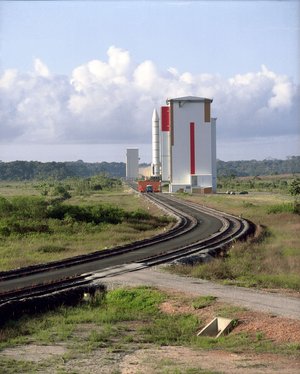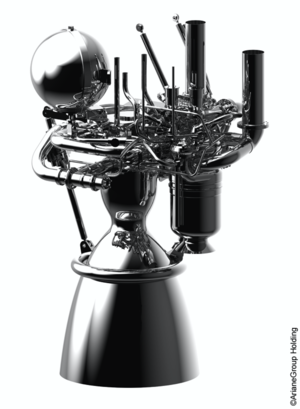Accept all cookies Accept only essential cookies See our Cookie Notice

About ESA
The European Space Agency (ESA) is Europe’s gateway to space. Its mission is to shape the development of Europe’s space capability and ensure that investment in space continues to deliver benefits to the citizens of Europe and the world.
Highlights
ESA - United space in Europe
This is ESA ESA facts Member States & Cooperating States Funding Director General Top management For Member State Delegations European vision European Space Policy ESA & EU Space Councils Responsibility & Sustainability Annual Report Calendar of meetings Corporate newsEstablishments & sites
ESA Headquarters ESA ESTEC ESA ESOC ESA ESRIN ESA EAC ESA ESAC Europe's Spaceport ESA ESEC ESA ECSAT Brussels Office Washington OfficeWorking with ESA
Business with ESA ESA Commercialisation Gateway Law at ESA Careers Cyber resilience at ESA IT at ESA Newsroom Partnerships Merchandising Licence Education Open Space Innovation Platform Integrity and Reporting Administrative Tribunal Health and SafetyMore about ESA
History ESA Historical Archives Exhibitions Publications Art & Culture ESA Merchandise Kids Diversity ESA Brand Centre ESA ChampionsLatest
Space in Member States
Find out more about space activities in our 23 Member States, and understand how ESA works together with their national agencies, institutions and organisations.
Science & Exploration
Exploring our Solar System and unlocking the secrets of the Universe
Go to topicAstronauts
Missions
Juice Euclid Webb Solar Orbiter BepiColombo Gaia ExoMars Cheops Exoplanet missions More missionsActivities
International Space Station Orion service module Gateway Concordia Caves & Pangaea BenefitsLatest
Space Safety
Protecting life and infrastructure on Earth and in orbit
Go to topicAsteroids
Asteroids and Planetary Defence Asteroid danger explained Flyeye telescope: asteroid detection Hera mission: asteroid deflection Near-Earth Object Coordination CentreSpace junk
About space debris Space debris by the numbers Space Environment Report In space refuelling, refurbishing and removingSafety from space
Clean Space ecodesign Zero Debris Technologies Space for Earth Supporting Sustainable DevelopmentLatest
Applications
Using space to benefit citizens and meet future challenges on Earth
Go to topicObserving the Earth
Observing the Earth Future EO Copernicus Meteorology Space for our climate Satellite missionsCommercialisation
ESA Commercialisation Gateway Open Space Innovation Platform Business Incubation ESA Space SolutionsLatest
Enabling & Support
Making space accessible and developing the technologies for the future
Go to topicBuilding missions
Space Engineering and Technology Test centre Laboratories Concurrent Design Facility Preparing for the future Shaping the Future Discovery and Preparation Advanced Concepts TeamSpace transportation
Space Transportation Ariane Vega Space Rider Future space transportation Boost! Europe's Spaceport Launches from Europe's Spaceport from 2012Latest

Launcher Integration Building - Ariane 504 transfer from the BIL
Thank you for liking
You have already liked this page, you can only like it once!
Transfer of Ariane 504 launcher from BIL (Launcher Integration Building) to BAF (Final Assembly Building).
The world's most powerful observatory for X-ray astronomy, the European Space Agency's XMM satellite, set off into space from Kourou, French Guiana, at 15:32 Paris time on 10 December 1999. The mighty Ariane 5 launcher, making its very first commercial launch, hurled the 3.9-tonne spacecraft into a far-ranging orbit.
The Ariane 5 ground installations (Ensemble N°3 de Lancement Ariane - ELA-3) which have been entirely financed by the European Space Agency, are constituted of four main areas.
Corresponding to the launch vehicle's concept, they have been built to streamline launch operations, to allow for further growth and to respect all the safety constraints.
The four main areas are:
- the solid-propellant booster integration building
- the launcher integration building, BIL (left of the view)
- the final assembly building, BAF (right of the view, in the background)
- the launch zone.
A launch table is used to transport the Ariane 5 vehicle between the launcher integration building, the final assembly building and the launch zone.
The Launch Control Centre controls all campaign operations. Arianespace took possession of these ELA-3 facilities on 25th November 1997 and the formal hand-over ceremony occurred on the 4th March 1998.
In 1999, new facilities were built to accommodate the increase of Ariane 5 launch rate:
- The boosters storage building (BSE - Bâtiment Stockage des Etages), (right of the view, in the frontground)
- The building Bâtiment 315 in the UPG (Usine de Propergol de Guyane) to store the boosters' segments.
- The pallets revalidation building (BRP - Bâtiment de Revalidation des Palettes) used to refurbish and store the pallets which support the boosters from the integration up to the launch. On the pad, these pallets support the entire weight of the launcher before lift-off.
-
CREDIT
ESA/CNES/Arianespace - Service Optique -
LICENCE
ESA Standard Licence

Satellite preparation facilities - Ariane 503 in the…

Satellite preparation facilities-Ariane 507 transfer…

Satellite preparation facilities - S5 building

Satellite preparation facilities - Ariane 504 in the…















 Germany
Germany
 Austria
Austria
 Belgium
Belgium
 Denmark
Denmark
 Spain
Spain
 Estonia
Estonia
 Finland
Finland
 France
France
 Greece
Greece
 Hungary
Hungary
 Ireland
Ireland
 Italy
Italy
 Luxembourg
Luxembourg
 Norway
Norway
 The Netherlands
The Netherlands
 Poland
Poland
 Portugal
Portugal
 Czechia
Czechia
 Romania
Romania
 United Kingdom
United Kingdom
 Slovenia
Slovenia
 Sweden
Sweden
 Switzerland
Switzerland

























